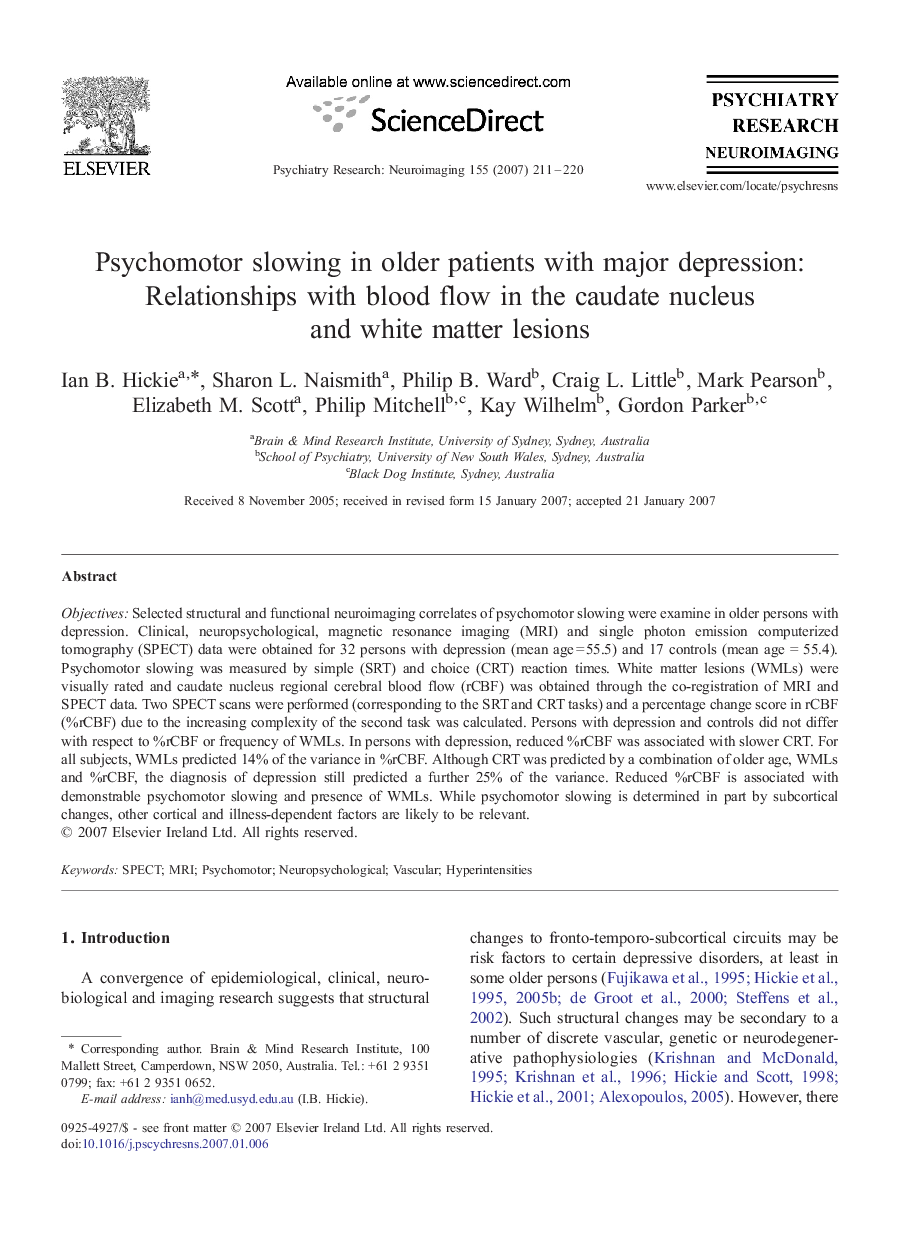| Article ID | Journal | Published Year | Pages | File Type |
|---|---|---|---|---|
| 334653 | Psychiatry Research: Neuroimaging | 2007 | 10 Pages |
ObjectivesSelected structural and functional neuroimaging correlates of psychomotor slowing were examine in older persons with depression. Clinical, neuropsychological, magnetic resonance imaging (MRI) and single photon emission computerized tomography (SPECT) data were obtained for 32 persons with depression (mean age = 55.5) and 17 controls (mean age = 55.4). Psychomotor slowing was measured by simple (SRT) and choice (CRT) reaction times. White matter lesions (WMLs) were visually rated and caudate nucleus regional cerebral blood flow (rCBF) was obtained through the co-registration of MRI and SPECT data. Two SPECT scans were performed (corresponding to the SRT and CRT tasks) and a percentage change score in rCBF (%rCBF) due to the increasing complexity of the second task was calculated. Persons with depression and controls did not differ with respect to %rCBF or frequency of WMLs. In persons with depression, reduced %rCBF was associated with slower CRT. For all subjects, WMLs predicted 14% of the variance in %rCBF. Although CRT was predicted by a combination of older age, WMLs and %rCBF, the diagnosis of depression still predicted a further 25% of the variance. Reduced %rCBF is associated with demonstrable psychomotor slowing and presence of WMLs. While psychomotor slowing is determined in part by subcortical changes, other cortical and illness-dependent factors are likely to be relevant.
